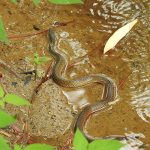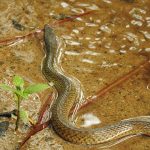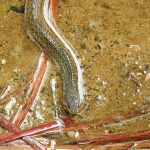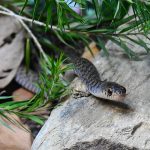KEELBACK
The Keelback snake
The Keelback snake, also known as the Freshwater snake, is a non-venomous snake species found in Australia.
Physical Characteristics
Average length is 120 cm although some individuals can grow longer. It has distinct rough scales along its body, giving it a textured appearance. The snake’s coloration can vary, but it usually has a dark brown or olive-green colour on its upper body, with lighter shades on its belly. It has a distinct keeled or ridged appearance on its scales, which gives the snake its name.
Habitat and Distribution
Keelback snakes are commonly found in freshwater habitats throughout eastern and northern Australia, including streams, rivers, swamps, marshes, and wetlands. They are well adapted to aquatic environments and are often seen near water sources. However, they can also be found in nearby grasslands and forests.
The Keelback snake is distributed across a wide range of eastern and northern Australia, including parts of Queensland, New South Wales, Victoria, and the Northern Territory. They have adapted to a variety of habitats within this range, allowing them to occupy different ecosystems.
Behaviour and Diet
They are primarily diurnal (active during the day) but may also be active at dawn or dusk. They are semi-aquatic and are excellent swimmers. Keelbacks are known to be non-aggressive and are generally docile snakes. When threatened, they may flatten their bodies, display a defensive posture, or emit a musky odour as a defensive mechanism.
Keelback snakes have a varied diet and feed on a range of prey items. They primarily consume amphibians, including frogs and tadpoles, but may also eat small fish, small reptiles, and invertebrates like insects and crustaceans. They are known to be effective predators in aquatic environments.
Breeding
Keelback snakes are oviparous, meaning they lay eggs. The females lay a clutch of around 4 to 14 eggs in a protected location, such as leaf litter or under logs. The incubation period varies but typically lasts several weeks to a few months. The hatchlings are independent from birth and receive no parental care.
Conservation Status
Localized threats such as habitat destruction and alteration, as well as pollution in freshwater habitats, can impact their populations.
It’s important to note that while Keelback snakes are non-venomous and generally harmless to humans, it’s always best to avoid handling any snake unless you have the necessary expertise. It’s also important to respect their natural habitat and observe them from a safe distance in the wild.




